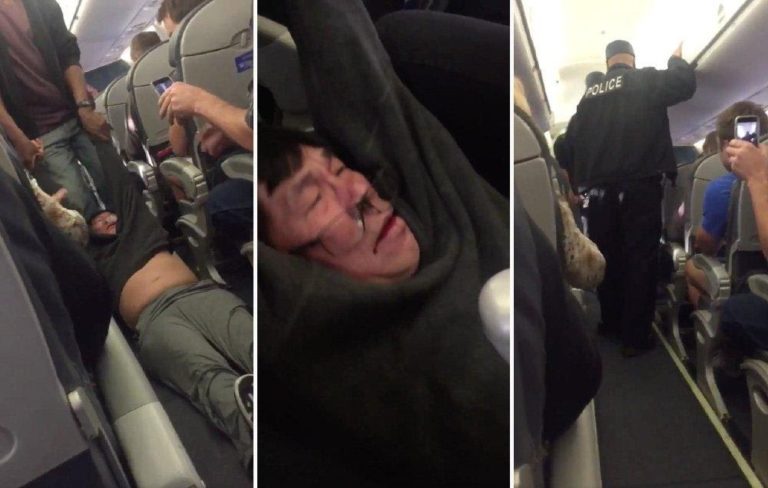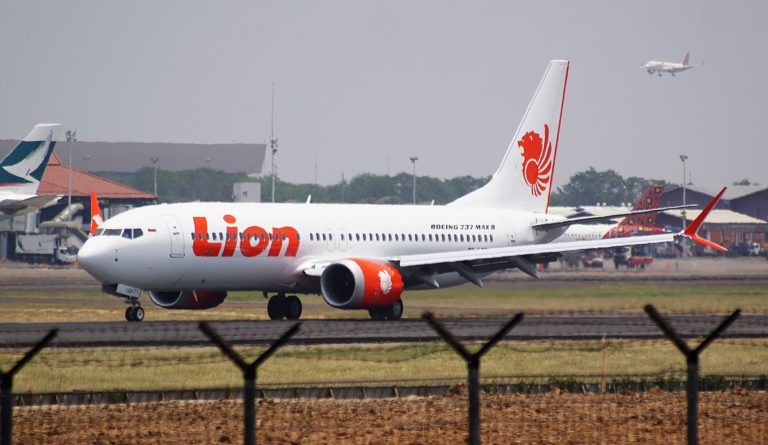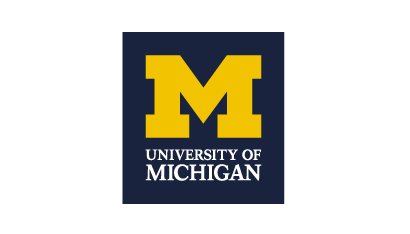Crisis management: Knowing your stakeholders
You are about to examine several examples of organizational crises that required company leaders to extract themselves from their typical day to day activities and focus their attention on what has been defined here as high stakes leadership. As you work through these examples, it will become clear that some leaders were more effective in this pursuit than others. In fact, for some of these examples, you may wonder if leadership had ever given a single thought to managing a major disruptive event. Sadly, all of them had, but when it came to execution, many missed the mark.
Scenario 1
On April 9, 2017, after passengers were seated on United Express Flight 3411, the United gate agent announced that four passengers would need to be removed in order to accommodate four staff members who required transportation to another location. The airline then selected four passengers for involuntary removal from the flight. Three of these passengers agreed to leave the flight. The fourth selected passenger was 69-year-old David Dao, an Asian-American doctor from Elizabethtown, Kentucky. When approached, he pleaded with the manager to not be removed and explained that as a doctor he could not miss his return flight home.
Chicago Department of Aviation Security Officers were called to forcibly remove him from the plane. In the process, they struck Dao’s face against an armrest, then pulled him, apparently unconscious, by his arms along the aircraft aisle past rows of onlooking passengers. Dao suffered a broken nose, lost two teeth, and was treated at a local hospital for a concussion. As the event took place, passengers on the flight recorded the event on video using smartphone cameras; then the videos were widely circulated on social media.

Image Credit: Scott Olson/Getty Images
The next morning, United CEO Oscar Munoz issued a brief statement that justified the removal of Dao, underscoring the airline’s right to “re-accommodate customers under certain conditions.” He also released an internal message to United Employees commending the crew’s actions. These statements were harshly criticized by the media and the public. Two days later, Mr. Munoz released an additional statement apologizing to Dao and promising to never let this happen again on a United flight. So, first question, was this a crisis for United? It absolutely was. Some say that any media is good media, but in this case, it’s hard to see how the saying could be true. This event did not play well for UAL. In fact, dragging a bloodied customer from the plane was only crisis number one for United. The poorly executed PR statements created a second crisis for the company. Second question: Which stakeholder groups were impacted most significantly by this event and deserve the greatest amount of attention? One could probably make an argument for any of them. But if you were forced to pick one or two, who would you choose? Keep in mind that there is really no “right” answer here. But in most crises, you’ll find that some groups are clearly impacted to a greater extent or in a more impactful way than others. Your ability to identify these will greatly help you focus your crisis leadership efforts.
In this case, the first you should identify is probably the Customer group. This group will be both angry with and somewhat afraid of United after this event. Knowing that you can’t turn back the clock and make this event go away, what could be done to win Customers back? To regain their trust? To regain their business? These are questions that won’t be addressed here, but are clearly the appropriate questions for high stakes leaders to be asking.
What do you think was the second priority stakeholder group for the United crisis? Of those remaining, you can imagine the Media doing the most damage with the information they had. There was a great deal of mobile video produced by other passengers and the bloodied face of Dr. Dao was horrific enough to generate lots of social media comments and forwards. The Regulator group might also be a good guess for the second priority group. Events like this can lead to both fines for the offending company and the possibility of new rules and regulations that could impact the sector going forward. How concerned would United’s Investors be about this crisis? In this case, Investors won’t like the story, but sadly the service bar has been set so low that customer expectations aren’t too far away from the treatment Dr. Dao received – or, at least, it seems that way at times – but United’s ability to grow and make money over the longer term won’t really be impacted much by this event. Again, sad, but true.
How about the Employee and Competitors groups? Employees will feel supported by their CEO based on the first message he released. And Competitors will cringe, but they will know that there isn’t much to be gained by launching a campaign that throws stones at United for their bad behavior.
What’s the lesson here? For this particular crisis, while all stakeholders were very interested in how this situation would be resolved, company leaders should have addressed the needs of the Customer, Media, and Regulator groups immediately to demonstrate their awareness of and concern for the crisis; to address causal factors and prevent a re-occurrence; and to begin their recovery efforts. Suffice it to say, these were not a few great days for UAL.
Scenario 2
On August 19th, 2016, Samsung officially launched the Galaxy Note 7 smartphone. It opened with both great reviews and great demand. But by September 2nd, 2016, two weeks after the launch, Samsung suspended sales of the phone and announced an informal recall after reports of manufacturing defects in the phones’ batteries had caused some units to overheat to the extent that they were bursting into flames and exploding, on occasions, in customer’s pockets. During the informal recall period, Samsung was replacing faulty phones with like units, some of which were also catching fire. By October 10th, Samsung recalled all Galaxy Note 7s and ceased production. Analysts reported that the financial impact of the product launch, recall, and termination was in the neighborhood of $17B.
So, first question, was this a crisis for Samsung? Absolutely! Second question: Which stakeholder groups were impacted most significantly by this event? Again, there are many correct answers to this question, but which two would you argue were the most important to engage as quickly as possible? Once again, the first priority group is probably Customers. Images of exploding phones are not good for consumer confidence. What could and should be done to regain the trust of this group (which is the logical third
 Image Credit: Jonathan Strobel • BAIDU
Image Credit: Jonathan Strobel • BAIDU
And the second highest priority stakeholder group? In this case, there is an argument to be made for the Investor group. While Employees, Regulators, and the Media will all need some attention as soon as practical, the Investor group wanted to know Samsung’s plans immediately. If this group wasn’t engaged right away, it was possible that the financial markets would sour so significantly on the company that the resultant impact on market capitalization might be irrecoverable.
Scenario 3
On April 12th, 2018, two black gentlemen were sitting in a Philadelphia Starbucks waiting for a friend. They hadn’t made a purchase and didn’t want to until their friend arrived. Because they were sitting in the store and hadn’t bought anything – yet – an employee asked them to leave. When they didn’t, the police were summoned. The men were arrested and detained for several hours before they were released without being charged. News of this incident went public quickly. Questions of racial bias were raised and the Starbucks brand was under fire. Consumer advocacy groups stepped in quickly to use this event as an illustration of a larger problem that required, no, demanded attention. Starbucks was now under a global spotlight. Question 1: Was this a crisis for Starbucks? Yes, it was.
 Image Credit: Melissa DePino
Image Credit: Melissa DePino
Question 2: Which stakeholder groups were impacted most significantly by this event? Do you think that this is another example of Customers being the top priority stakeholder group? Do you believe that customers around the world would stop purchasing their Venti Carmel Macchiatos if Starbucks didn’t make things right immediately? Post-event analysis suggests that while customers didn’t support the way the situation was handled, the event didn’t put significant downward pressure on demand for Starbucks beverages.
So, if not Customers, which stakeholder group required immediate attention? In this case, the Advocacy groups, an NGO subset of the broader Regulator group, should have been the priority. And the next highest priority group? An argument can be made for the Employee group, with communications about what happened, what the company expects of them, and what to do if they are faced with the same situation.
In this case, almost immediately, Howard Schultz, Starbucks Chairman, stepped up and owned the issue. He very visibly assured everyone watching this event play out that he was personally embarrassed and ashamed. He made it clear that what had happened was reprehensible and that the company was committed to making things right. Among the steps Starbucks took to do so was to shut down the entire company for the better part of a day on May 28th to conduct racial bias training for 175,000 employees. This training that would cost the company millions of dollars, but it would clearly send the message that this would not happen again. Today, this response is viewed by many as an exceptional case of doing the right thing in the face of a crisis.
Scenario 4
On October 29th, 2018, a Lion Air Boeing 737 MAX passenger plane crashed departing Jakarta, Indonesia killing all of its 189 passengers and crew. Boeing’s subsequent investigation was inconclusive, but their public response suggested both potential issues with the angle of attack system as well as possible shortcomings in pilot training and experience.
Then, on March 10th, 2019, another 737 MAX aircraft operated by Ethiopian Airlines crashed six minutes after takeoff from Addis Ababa airport in Ethiopia, killing all of its 157 passengers and crew.
 Image Credit: Lion Air Boeing 737-MAX8; @CGK 2018 by PK-REN is licensed CC BY-SA 2.0.
Image Credit: Lion Air Boeing 737-MAX8; @CGK 2018 by PK-REN is licensed CC BY-SA 2.0.
 Image Credit: Ethiopian Airlines ET-AVJ takeoff from TLV by LLBG Spotter is licensed CC BY-SA 2.0.
Image Credit: Ethiopian Airlines ET-AVJ takeoff from TLV by LLBG Spotter is licensed CC BY-SA 2.0.
On March 11th, Ethiopian Airlines grounded all of its 737 MAX aircraft. Later that day, the China Civil Aviation Administration grounded all 737 MAX aircraft operating in China. On March 12th, the US Federal Aviation Administration stated that it had “no basis to order grounding the aircraft” and no data from other countries to justify such action. The next day, however, regulators in both Canada and the United States announced that they now had new information that supported the grounding of all 737 MAX aircraft. By March 14th, Boeing stock had lost 11% of its value. By March 23rd, that number had reached 18%, which equated to approximately $40B in market value. As of June 1st, 2020, all 737 MAX aircraft remained grounded.
Was this a crisis for Boeing? Yes, in any sense of the word crisis. Which stakeholder groups required immediate attention? In this scenario, it would be difficult to eliminate many from the full list. Regulators were under as much scrutiny as Boeing, so they needed immediate engagement. Customers and Investors were panicking as orders were cancelled and market capitalization was falling rapidly. Employees were concerned not only about their jobs, but were devastated by the lives lost to mechanical failure. The Media found themselves in the unique position of not having to use their channels for raising awareness, as most of the world was following the story. Perhaps in this case, the Media would be the least important stakeholder to engage. That said, given the scenario, they would certainly not be a stakeholder to ignore.
From these examples, you can begin to understand the importance of knowing your stakeholders: what they expect from their relationship with an organization and how those expectations are threatened when the organization is struggling through a crisis. An appreciation for stakeholder perspective in this way is perhaps the most valuable tool a crisis leader can have at hand.
Share this
High Stakes Leadership: Leading in Times of Crisis

High Stakes Leadership: Leading in Times of Crisis


Reach your personal and professional goals
Unlock access to hundreds of expert online courses and degrees from top universities and educators to gain accredited qualifications and professional CV-building certificates.
Join over 18 million learners to launch, switch or build upon your career, all at your own pace, across a wide range of topic areas.
Register to receive updates
-
Create an account to receive our newsletter, course recommendations and promotions.
Register for free







